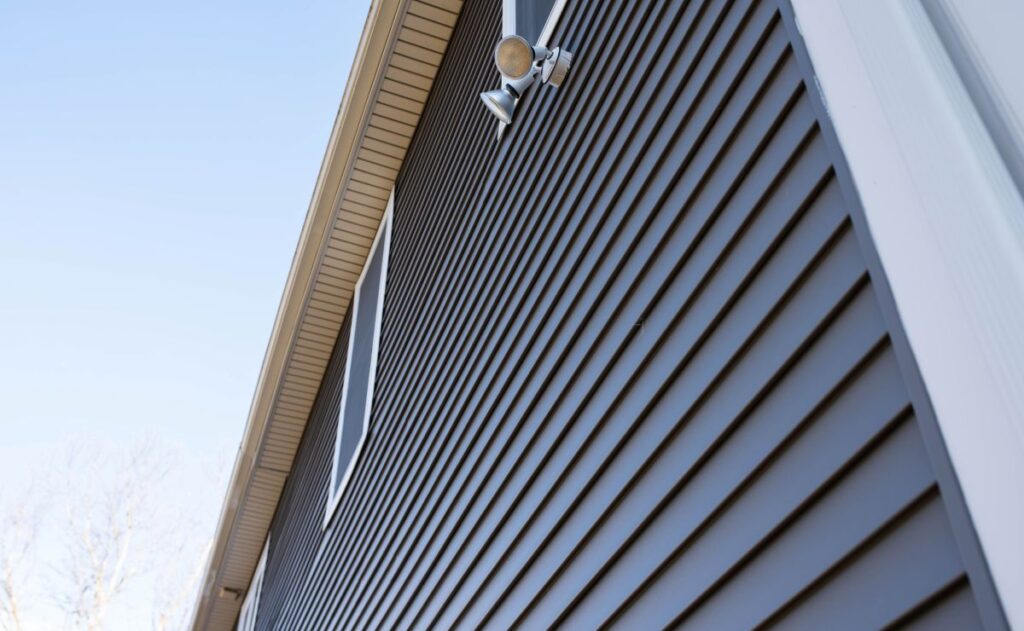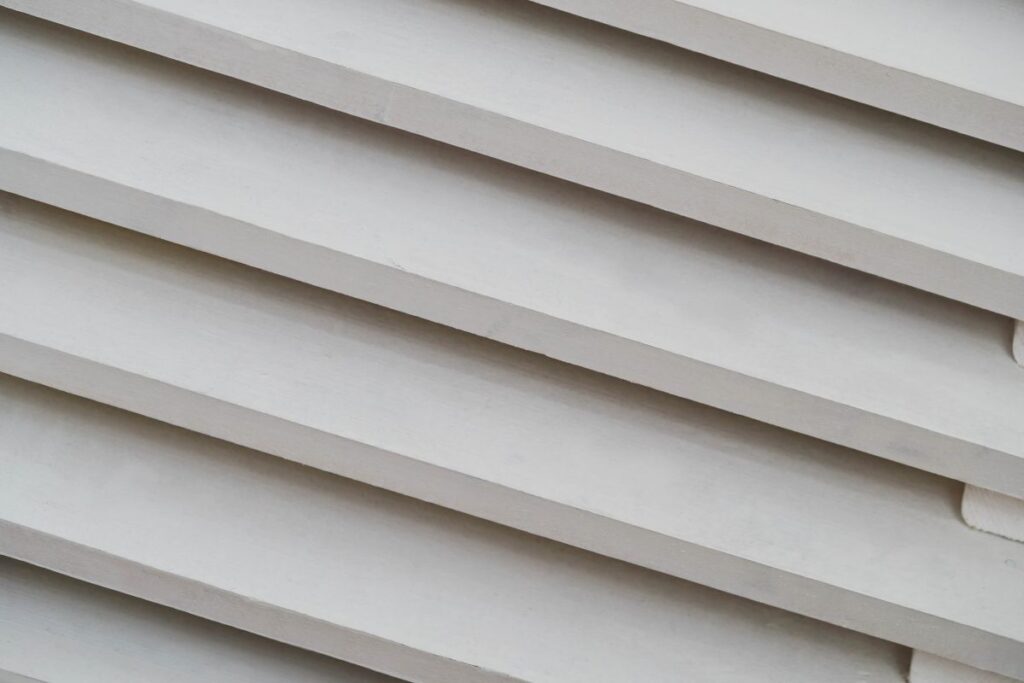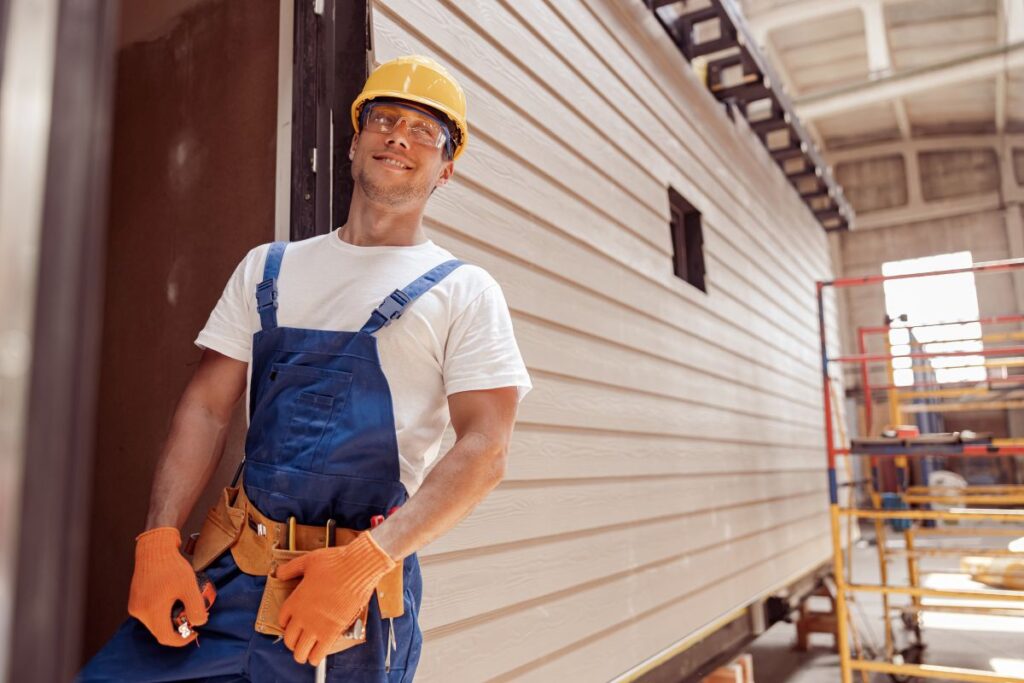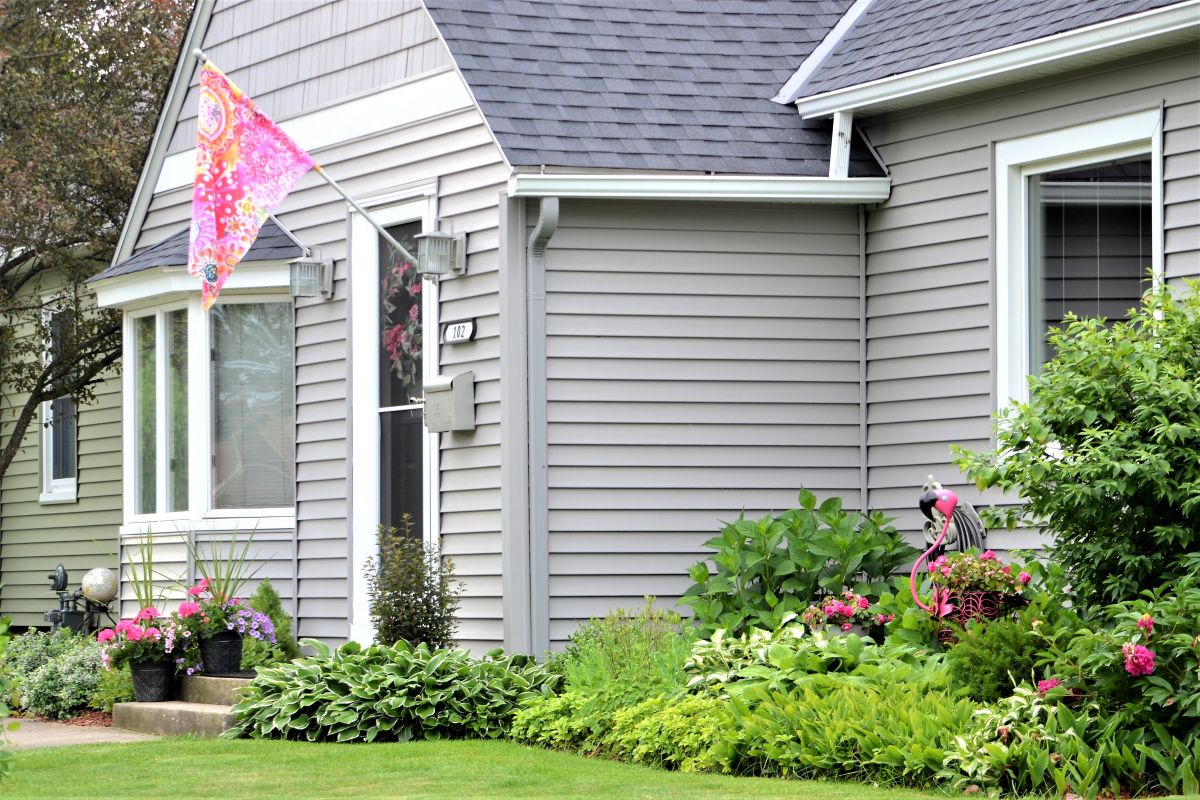Table of Contents
- Introduction: Why Vinyl Siding Is Popular in Calgary
- Key Cost Drivers for Vinyl Siding Installation
- Typical Cost Ranges in Calgary & Alberta
- Cost Breakdown: Material, Labour, Prep, Extras
- Vinyl Siding & Hail / Storm Risk: What to Expect
- Comparing Vinyl to More Impact-Resistant Options
- Insurance, Claims & Matching Issues
- How to Estimate Your Specific Home
- Tips to Control Costs without Compromising Quality
- Choosing the Right Contractor (Total Exteriors’ Approach)
- Maintenance, Warranty & Lifespan Considerations
- Frequently Asked Questions
- Conclusion & Call to Action
1. Introduction: Why Vinyl Siding Is Popular in Calgary
When homeowners in Calgary look to renovate or restore their exterior shell, vinyl siding often appears at the top of the list. It balances affordability, aesthetics, and ease of maintenance. For Total Exteriors Ltd., offering full exterior restoration (roofing, siding, soffits, eavestrough, cladding) after hail, wind, or storm damage, vinyl siding is one of our go-to materials where conditions make sense.
However, choosing vinyl doesn’t mean it’s a one-size-fits-all decision. Because of Calgary’s unique weather — severe hail, high winds, freeze-thaw cycles — the cost and design decisions must factor in resilience, warranties, and insurance. In this detailed guide, we break down what it costs to install vinyl siding on a Calgary home, how hail and storm exposure change that cost, and what you should watch out for.
By the end of this post, your prospects (or you) will have a clear understanding of realistic pricing, value factors, and how Total Exteriors can deliver a durable solution.
2. Key Cost Drivers for Vinyl Siding Installation
Before jumping into numbers, it’s crucial to understand what drives the cost of a vinyl siding project. Two homes of identical square footage can differ by tens of thousands of dollars in quote, based on these variables:
| Cost Factor | Impact on Price | Notes / Considerations |
|---|---|---|
| Quality & thickness of vinyl | Higher grade, insulated or impact-resistant siding costs more per panel | Thicker siding resists denting and fading better |
| Home size & shape / number of storeys | More wall area, more corners, gables, dormers complicate installation | Complex roofline or second floors add labour |
| Removal / disposal of old siding | Older materials (asbestos or wood) or multiple layers raise cost | Also includes disposal fees |
| Wall sheathing, insulation, structural repairs | If sheathing is damaged or siding removal reveals rot or mold, additional cost is triggered | Investing in proper backing helps long term |
| Trim, flashing, trim details, soffits, fascia | Corners, windows, door trim, trim boards, returns, etc. all add labour and materials | Flashing and caulking are essential to prevent water ingress |
| Accessibility / scaffolding / site conditions | Tight lots, multi-level, landscaping constraints may require extra scaffolding or lifts | Adds to labour overhead |
| Permits, inspection, warranty, overhead | Some jurisdictions require permits; contractors may include premium for warranty, job logistics | Choose a reputable contractor with proper insurance |
| Weather / seasonal adjustments / supply costs | Volatile material costs or seasonal demand can affect quotes | In Calgary, off-peak season projects might be slightly discounted |
When you know which levers drive cost, it’s easier to evaluate quotes and manage expectations.
3. Typical Cost Ranges in Calgary & Alberta
To anchor expectations, here are industry averages and comparators:
- In general Canadian context, some sources place vinyl siding cost around CAD $6–$10/sq ft including installation.
Putting that into context: for a 2,000 sq. ft. home (assuming approx. 1,800 sq. ft. of exterior wall coverage after deductions for windows/doors), vinyl siding installed might cost in the range of CAD $9,000 to $18,000, not including extra repairs, insulation, or structural fixes.
Beware: Some contractors quote low “material cost only” or “panel replacement only” jobs. A full exterior replacement (removing old siding, repairing sheathing, flashing, finishing edges) is more comprehensive.
4. Cost Breakdown: Material, Labour, Prep, Extras
To demystify the pricing further, here’s how costs generally split:
4.1 Material Costs (Vinyl Panels, Accessories, Trim)
- Base vinyl panels: moderate grades often cost $0.80 to $2.00+ per square foot (CAD) depending on thickness, embossing, UV protection, colour.
- Trim, J-channels, soffit, fascia, corner posts, starter strips, trimboard: often add 15–25% over panel cost.
- Accessories: flashing, caulking, underlayment, vapor barrier—small per-foot items but add up over the whole house.
4.2 Labour Costs
- Labor can be a major chunk — installing, aligning, cutting, flashing, trimming, caulking, finishing edges, cleanup.
- In Calgary, labour pricing typically aims at the $2–$6+ per sq ft range (depending on difficulty, accessibility). Some DIY or “light-labour” quotes might suggest lower, but quality and warranty suffer.
- Removal and disposal of old siding is labour‐intensive work too — expect additional cost per sq ft or per square (100 sq ft) for that.
4.3 Preparation, Repairs & Sheathing
- If the underlying sheathing (OSB, plywood, etc.) is deteriorated, wet, moldy, or bowed, repair or replacement is required.
- Insulation upgrades, building wrap, moisture barriers, furring strips or strapping (for ventilation) may be needed.
- Structural reinforcement or leveling (especially around windows, corners) can add to cost.
4.4 Extras, Overheads & Contingencies
- Permits, inspections, scaffolding, lifts, fire safety, waste disposal fees.
- Contractor markup, overhead, warranty cost.
- Contingency buffer—unexpected rot, water damage, misalignment, hidden issues under siding.
Example cost allocation (ballpark percentages):
- Material & trim: 30–40%
- Labour: 35–50%
- Prep / repair / sheathing: 10–20%
- Overhead / waste / contingencies: 5–10%
So, for a $15,000 job, you might expect ~$4,500–$6,000 in materials + trim, $5,500–$7,500 in labour, and ~$2,000–$3,000 in prep, repairs, scaffolding, etc.
5. Vinyl Siding & Hail / Storm Risk: What to Expect

One of the biggest variables facing Calgary homeowners is hail. Vinyl siding, though cost-effective, has trade-offs in hail-prone regions. Here’s what to know:
5.1 Recognizing Hail Damage on Vinyl
Not all damage is obvious. Some signs are subtle:
- Cracks or splits parallel to the siding, or semicircular fissures between ridges.
- Chipping at the bottom edge of panel ridges (a half-circle chip).
- Dents or puckering in the panel surface.
- Discolouration, stress lines, or brittleness over time (due to UV aging) which makes siding more fragile.
- Compare multiple panels on a face — if clustered hits on one wall exist, likely hail.
- Note: some damage below waist level or near mower height might be mechanical (rock chips) rather than hail.
A careful visual and tactile inspection is critical. Professionals often inspect siding right after storms, looking for consistent damage patterns.
5.2 Vinyl’s Vulnerability to Hail
- According to sources, vinyl siding has a “low hail impact resistance rating” compared to more rigid materials like steel or fibre cement.
- Even moderate hail can crack or fracture vinyl siding.
- As vinyl ages, it becomes more brittle, making it more susceptible to damage in hail or freeze-thaw cycles.
- Once a panel is cracked or chipped, water and moisture ingress behind the siding becomes a risk, potentially causing mold or wood rot.
5.3 Mitigating Hail Impact
There are ways to reduce risk or improve resilience:
- Choose thicker / impact-rated vinyl siding — heavier gauge siding with enhanced UV and impact modifiers.
- Insulated vinyl siding — some vinyl products include a continuous rigid foam backing fused to vinyl, increasing rigidity and impact absorption (R-values also increase).
- Strategic landscaping / protective features — planting shrubs, installing awnings, or shading vulnerable walls can deflect hail.
- Enhanced flashing, better fastening, and quality installation — ensuring panels are properly anchored, snapped, and sealed reduces flap or blow-off risk in high winds.
- Alternative siding materials — if hail is a recurring issue, homeowners may opt for more durable siding options (steel, fiber cement) as a long-term upgrade.
6. Comparing Vinyl to More Impact-Resistant Options
To make a truly informed decision, it helps to compare vinyl against alternatives that are better suited to hail and storm exposure. Even if you ultimately choose vinyl, knowing the trade-offs strengthens your quotes and defend your choice.
| Material | Typical Installed Cost* | Hail / Impact Resilience | Lifespan / Maintenance | Pros & Cons |
|---|---|---|---|---|
| Vinyl (standard or insulated) | CAD $6–$10 / sq ft (installed) | Moderate / Low, susceptible to cracking & dents | 20–30+ years (depending on quality) | Low cost, easy install; less durable under hail exposure |
| Fiber Cement / Hardie Board / James Hardie | CAD $7–$14+ / sq ft installed (depending on complexity) | Good resistance, better than vinyl, may chip under severe impact | 30–50+ years (with proper maintenance) | Better impact resistance, texture options; heavier, more labour intensive |
| Steel / Metal Siding | Roughly CAD $10–$16+ / sq ft (installed, depending on gauge) (Canadian estimates similar to US) | Excellent resilience to hail (less cracking) | 40+ years | Highly durable, low maintenance, fewer dent risks; may show dents in extreme cases |
| Engineered / Composite / High-Impact Siding | Variable; potentially 1.2×–2× premium over vinyl | Very good, designed with impact resistance in mind | Long life, moderate maintenance | Offers improved durability, but costlier upfront |
| Brick, Stone, Masonry Veneer | High (CAD $20+/sq ft or more) | Excellent, essentially immune to hail | 50+ years or more | Highest durability, premium look, high cost and structural support needed |
* Costs are approximate and depend heavily on location, complexity, and contractor.
While vinyl is often an effective choice in many Calgary homes, for areas with frequent hail events or for homeowners prioritizing durability, investing in fiber cement, steel, or impact-rated siding can pay off in fewer repairs and lower risk over the long run.
7. Insurance, Claims & Matching Issues
Because Total Exteriors often works in post-storm remediation, insurance considerations are key. Understanding how insurers view siding replacement, matching, and claims can make the difference between a stress-free rebuild and budget blowouts.
7.1 When Insurance Covers Siding Damage
- Most homeowner policies cover “direct physical loss” from hail or wind if you file promptly and document the damage.
- The burden is on the homeowner to provide evidence (photos, dated storm records, professional inspection).
- Some policies have matching / uniform appearance clauses; others don’t. If your siding color or profile is discontinued, replacement may lead to mismatched walls.
- In some cases, insurers will only replace the damaged portion / side and refuse to replace undamaged sides even for color matching.
For example, a homeowner posted this experience:
“My adjuster is saying they don’t have to replace the other 2 undamaged sides of the house and that the replacement vinyl doesn’t have to color match.”
Thus, working with an experienced contractor who can negotiate with adjusters and document matching issues is beneficial.
7.2 Matching / Uniform Appearance Challenges
- Vinyl siding fades over time. New panels will appear brighter or slightly off in hue compared to aging siding.
- When siding lines or profiles are discontinued, matching becomes impossible.
- To get visual consistency, an insurer may require full wall replacement rather than patching just the damaged portion.
- Some homeowners choose to replace all siding on a façade or the entire house themselves, covering the difference beyond what insurance pays.
7.3 Role of Contractor in Insurance Claim
A skilled siding / exterior restoration contractor (like Total Exteriors) can:
- Perform a professional storm damage inspection and provide a damage report to insurers
- Walk the premises with adjusters to point out hidden damage
- Provide uniform pricing and match colours, or show equivalency to argue replacement value
- Manage change orders, unit pricing, and contingency claims
- Mitigate exposure to underpayment or scope shrinkage by insurers
Proper documentation, high-quality work, and transparent communication increase the chances that your client will be fully compensated for the restoration required.
8. How to Estimate Your Specific Home

Here’s a step-by-step method you or prospective clients can use to produce a rough estimate for vinyl siding installation in Calgary:
- Measure or get the exterior wall area
- Measure each wall (length × height) minus windows/doors
- For gables, measure triangles and add
- Sum total exposed wall area in square feet
- Decide on siding grade / thickness
- Standard, thick, insulated, impact-rated etc.
- Choose trim & accessory budget
- Estimate additional 15–25% over panel area for trim, soffits, fascia, flashings
- Apply a per-square-foot installed cost
- Use $6–$10 CAD/ft² baseline (for moderately complex jobs)
- Multiply by wall area
- Add preparation & repair buffer
- Add 10–20% of the base cost for repairs, sheathing, old siding removal
- Add scaffolding / site overhead / contractor overhead
- Add fixed or percentage overhead (e.g. 5–10%)
- Review with contractor / get quotes
- Compare with local quotes
- Adjust for complex features, multi-level, difficult access
Example:
- Home wall area (after subtracting windows/doors): 1,800 ft²
- Base installed cost: $8/ft² → 1,800 × 8 = $14,400
- Trim & accessory allowance (20%): + $2,880 → $17,280
- Repair / prep allowance (15%): + $2,592 → $19,872
- Overhead / scaffolding (7%): + $1,392 → ~ $21,264
So that home might expect a ballpark install cost of CAD $20,000–$22,000 for a full, high-quality vinyl siding replacement with allowances.
9. Tips to Control Costs Without Compromising Quality
While you want durability and aesthetics, there are smart ways to optimize budget:
- Phased renovation: Replace one side at a time, or upgrade only most-exposed walls (e.g., south or west facing).
- Simplify design / reduce complexity: Fewer corners, simpler rooflines, less custom trim.
- Negotiate trim package: Use standard trim sizes or fewer colors to save on custom trim.
- Use efficient access / staging: Plan scaffolding and staging well to reduce crew travel time.
- Bundle other exterior work: Combining siding with roof, soffit, eaves, gutters often yields discounts on mobilization.
- Choose mid-tier rather than premium grade vinyl: A strong mid-grade product often balances performance and cost.
- Arrange timely demolition / removal: Handling removal early avoids delays, rework, or storage cost.
- Have contingency funds: Expect surprises, but plan for them (e.g., 5–10% buffer).
- Get competitive bids, check references: Don’t simply pick lowest price; inspect quality, warranty, reputation.
10. Choosing the Right Contractor (Total Exteriors’ Approach)
Here is how Total Exteriors positions itself as the trusted partner in Calgary for exterior restoration and siding work:
- Full-scope exterior remediation expertise
- Because we handle roofing, siding, soffits, eavestrough, cladding, we see the full envelope and holistically restore after storms.
- We understand how siding interacts with roof edges, flashing, gutter connections—vital for long-term performance.
- Storm & insurance experience
- We regularly work with adjusters and clients on hail, wind, or storm damage jobs.
- Our documentation, inspection reports, and scope definitions help ensure insurance claims are fair and complete.
- Quality materials & impact mitigation
- We source vinyl siding options with better UV stabilizers, thicker gauge, or backed with insulative cores.
- Our installation practices (secure fastening, recommended trim, flashing, moisture barriers) reduce risk under heavy storm events.
- Transparency in quoting & change management
- We break down cost line items (material, labour, repair, overhead).
- We include documented allowances for contingencies and make change orders visible.
- Warranty and post-project service
- We support warranties, inspect work thoroughly, and correct issues promptly.
- Our reputation depends on lasting performance, not “lowest bid and disappearing.”
- Local knowledge & Calgary conditions
- We understand freeze-thaw, extreme temperature swings, snow load, hail zones, wind loads in Calgary.
- Our crew experience is in local climate; no surprises.
When your prospects understand why paying for quality and proper installation matters, they’ll perceive value beyond just the per-foot quote.
11. Maintenance, Warranty & Lifespan Considerations

Choosing vinyl siding is not “install and forget.” Performance over decades depends on maintenance, warranties, and expected lifespan:
11.1 Typical Lifespan
- Good-quality vinyl siding, properly installed and maintained, can last 20–30+ years (some premium lines claim higher).
- In hail-prone or extreme climates, replacement or repair may be necessary earlier for some panels.
11.2 Warranties
- Most vinyl siding products carry manufacturer warranties (often 25, 30 years, or lifetime limited).
- Warranties may cover fading, warping, material defects—but not damage from hail or impact.
- Your contractor may provide a workmanship warranty (e.g. 5–10 years).
- Always ensure warranties are transferred to the homeowner and properly documented.
11.3 Maintenance Tips
- Clean siding periodically (gentle washing, not power washing).
- Inspect after storms for cracks, chips, and seal gaps.
- Re-caulk joints and flashing as needed to maintain watertightness.
- Replace damaged panels promptly to prevent water intrusion behind walls.
- Trim landscaping and trees that could rub or hit siding.
Maintenance and prompt repairs help extend service life and protect underlying structure.
12. Frequently Asked Questions
Q1: Will my insurance pay for full siding replacement after hail?
A: It depends on your policy. If hail damage is documented as “direct physical loss,” your insurer should cover repair or replacement. But many insurers only pay for the damaged portion, not entire walls, unless matching provisions or uniform appearance clauses apply.
Q2: Why do quotes vary so much between contractors?
A: Because of differences in material grade, labour expertise, trim detail, warranty, site conditions, and risk buffers. The lowest bid may cut corners on flashings, fastening, moisture barrier, or warranty.
Q3: Should I choose fiber cement or steel instead of vinyl given hail risk?
A: In hail-prone areas, selecting more impact-resistant siding (fiber cement, steel, composite) may reduce long-term repair costs. But the cost is higher upfront. If your client is balancing budget vs. longevity, propose both and show life-cycle comparisons.
Q4: What is insulated vinyl siding, and is it worth the extra cost?
A: Insulated siding integrates a rigid foam backing to the vinyl panel, improving rigidity, reducing buckling, and slightly boosting insulation (R-value). In some cases it offers better performance under hail. It’s costlier, but valuable in certain conditions.
Q5: How soon should I replace siding after hail damage?
A: Report damage promptly to your insurer. A timely inspection helps preserve legitimate claim rights. Delaying replacement can allow water intrusion, mold, rot, and hidden structural issues.
13. Conclusion & Call to Action
Installing new vinyl siding on a Calgary home is more than just slapping on panels — it’s about resilient design, quality installation, and storm-aware decision-making. While vinyl remains one of the most cost-effective siding options, the unique weather challenges of Calgary (hail, wind, freeze-thaw) demand thoughtful material selection, installation quality, and a contractor experienced in exterior remediation.
At Total Exteriors Ltd., we specialize in full exterior restoration and replacement after storm, wind, or hail damage. We guide clients through insurance claims, material selection, durability trade-offs, and deliver high-quality workmanship backed with warranty support. If you’re considering vinyl siding replacement — or exploring more impact-resistant options — we’re ready to help with a no-obligation consultation, damage inspection, and tailored quote.
Contact Total Exteriors today to arrange a free site assessment and get a professional estimate for your Calgary home’s siding restoration.

